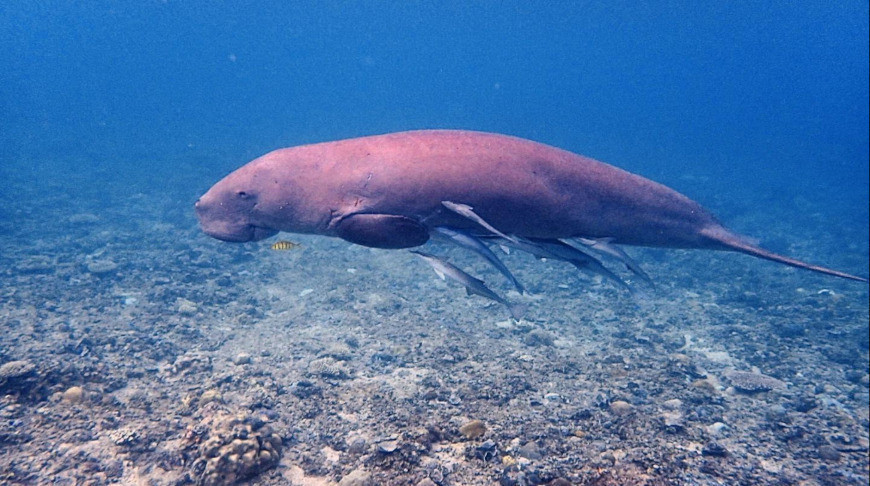
BEIJING, 27 August (BelTA - China Daily) - Chinese scientists have
recently confirmed the presence of a dugong aka "sea cow" - one of the
oldest marine mammals - in the coastal waters near Yongshu Reef in
China's Nansha Islands since early July. The discovery marks the first
verified sighting of the species in the Nansha Islands and central South
China Sea in three decades and indicates a significant improvement in
the region's ecological system.
Although dugongs have a long life span of 70
years, they have a slow birth rate, making it difficult for populations
to recover from disruptions. The species is under first-level State
protection and is categorized as vulnerable by the International Union
for Conservation of Nature.
Due to hunting, habitat loss, collisions with ships and other human interventions, the dugong was evaluated in 2022 as functionally extinct in China - defined as a species unable to reproduce or survive in natural habitats due to human activities - with the last confirmed sighting being a dead individual in Dongfang, Hainan province, in 2008.
The 2024 South China Sea Region Marine Ecological Conservation and Restoration Bulletin reveals significant progress in recent years in the conservation and restoration of mangrove forests, coral reefs, coastlines and islands, as well as in controlling invasive smooth cordgrass. Last year, the total investment in marine ecological conservation and restoration of the region exceeded 5 billion yuan ($697 million).
Weighing around 500 kilograms and
measuring up to 3 meters in length, the dugong - a prototype for the
mermaid in Chinese folklore - inhabits the warm coastal waters of the
Indian and Pacific Oceans. This herbivorous mammal has a high dietary
requirement for seagrass and plays a crucial role in maintaining the
health of the ecosystem by promoting seagrass regeneration through its
grazing behavior.
Due to hunting, habitat loss, collisions with ships and other human interventions, the dugong was evaluated in 2022 as functionally extinct in China - defined as a species unable to reproduce or survive in natural habitats due to human activities - with the last confirmed sighting being a dead individual in Dongfang, Hainan province, in 2008.
The 2024 South China Sea Region Marine Ecological Conservation and Restoration Bulletin reveals significant progress in recent years in the conservation and restoration of mangrove forests, coral reefs, coastlines and islands, as well as in controlling invasive smooth cordgrass. Last year, the total investment in marine ecological conservation and restoration of the region exceeded 5 billion yuan ($697 million).













